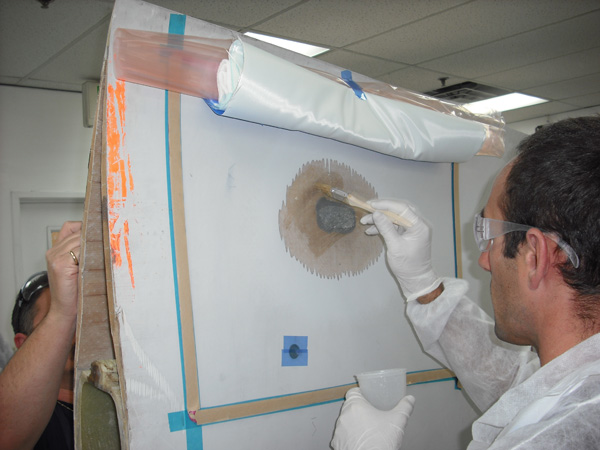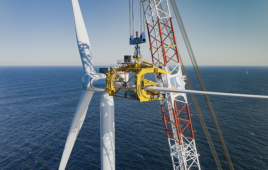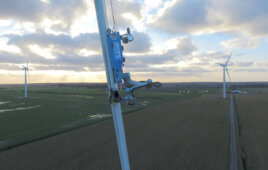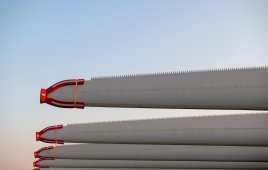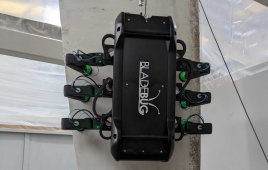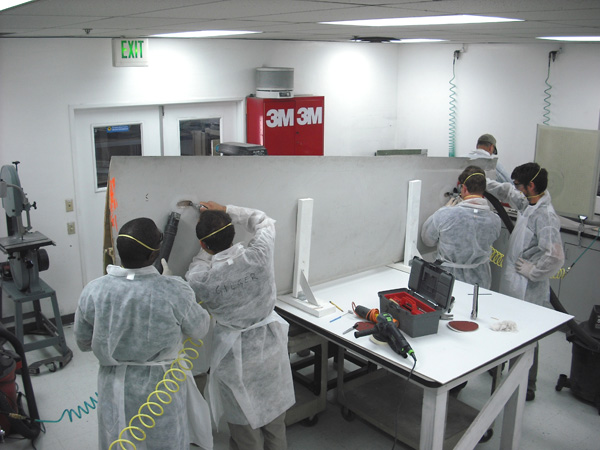
During an advanced composite training class, students learn the latest methods for repairing damaged wind-turbine blades.
By Louis C. Dorworth
Division Manager-Direct Services
Abaris Training Resources, Inc.
As wind farms age and new turbines grow in height and blade size, the demand for maintenance and repair services is increasing at a rapid rate. Because of this, many new companies have emerged in recent years to meet the demands of wind farm owners and OEM’s looking for composite blade repairs. The technicians from these companies offer up a mixed bag of restoration skills, mostly gained through on-the-job training and experience in the field.
Treatment options for damaged blades often vary depending on the blade’s brand, geographic location, and ultimate repair needs. Blade erosion is a common side effect of the harsh weather conditions most turbines face over time. Repairs for erosion are considered cosmetic and are often completed externally on the blade at the wind farm by using leading edge tape or a urethane or epoxy filler paste. Pastes are simply faired along the leading edge to a suitable aerodynamic surface. A decent auto-body repair technician with rope skills can usually fix this type of problem.
More challenging repairs involve impacts to the structural or aerodynamically critical areas on the blade. This type of damage has a number of causes, ranging from bullet holes (moving turbine blades have served as target practice on more than one occasion) to full-blown lightning strikes that require entire tip replacements or more. A much higher level of skill is required for proper assessment and mending of the load-bearing composite structures.
To successfully repair a structural composite, a technician must fully understand the materials used in the construction of a blade. Bulk glass fabrics, such as bi- or tri-axial stitched materials and select unidirectional forms, are often used to sandwich either end-grain balsa or foam core in the construction of the of a blade’s skins. These multi-axial plies contain independent layers of unidirectional forms stitched together on different axes to achieve a thicker bulk form that’s more conducive to rapid manufacturing.
An increasingly common dilemma that arises during structural blade repairs is whether or not to use multi-axial bulk fabrics as repair plies. The traditional approach involves removal of the damaged laminate and core, and step-sanding around this area by grinding down through the laminate to each layer of bulk fabric (separating span-wise uni-layers, if applicable). Technicians blend the steps afterwards into a tapered scarf angle.
This process is followed by a core fill or replacement, along with the replacement of each bulk layer with a bulk layer (and each uni with a uni layer), which must include a specified overlap distance that corresponds to the tapered scarf arrangement. The resulting patch is, unfortunately, quite unattractive and structurally inefficient. In fact, step-sanding or grinding down through the layers until a different material appears can unwittingly cause damage to those underlying layers.
A more recent approach is gentler on the blades. Instead of first step-sanding or grinding the layers, this process taper-sands or “feathers” all of the layers to the appropriate scarf-angle distance from the edge of the removed damage. This exposes each axial element within the laminate to a suitable overlap distance (chord-wise and span-wise) without as much risk to the underlying layers in the structure.
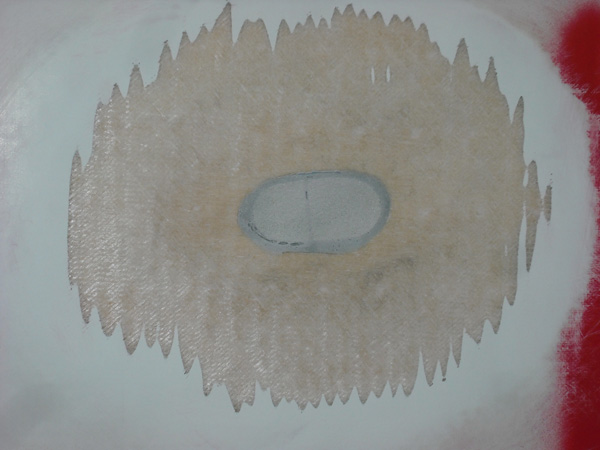
After the damaged area is removed from a turbine blade, bulk layers of materials are replaced with uni-directional layers at a specified overlap distance that corresponds to a tapered scarf angle. Here the taper scarf and core repair is complete.
Each unidirectional element of every bulk layer is then repaired with the equivalent weight of uni materials, matching each to the original orientation found in the blade structure. This method ensures each independent fiber layer regains its original axial-load direction within the repair layup. For example, each tri-axial layer consisting of 0/+45/-45 layers stitched together would be repaired with three independent unidirectional layers oriented at 0/+45/-45 angles to match the original structure.
Although this repair approach requires more individual layers, the layers are lighter and less prone to peeling off of a blade’s vertical surface during a wet layup repair. The edge of each uni ply is quite thin compared to the thicker bulk plies that are commonly used in the traditional ply replacement approach, resulting in a more aerodynamically flush blade surface and a more structurally efficient blade.
As technology improves and the number of turbine blade repairs increase, this and other more structurally sound repair methods will likely become standard practice within industry. After all, it takes nearly the same amount of time to perform a good repair as it does a poor repair, and quality counts when it comes to turbine blade performance and production.
For a digital copy of the entire June issue of Windpower Engineering & Development, click here.
Filed Under: Blades, Training

